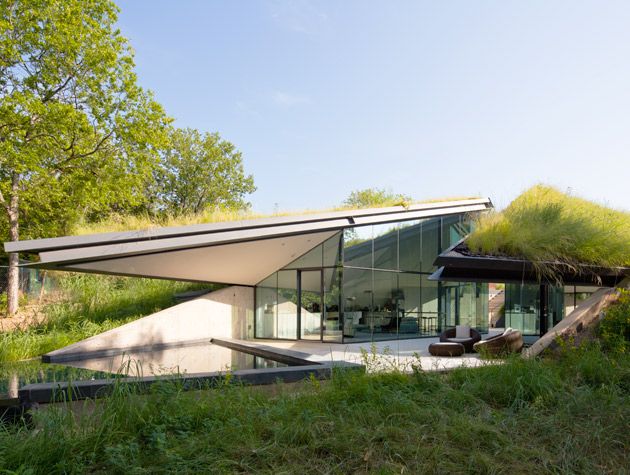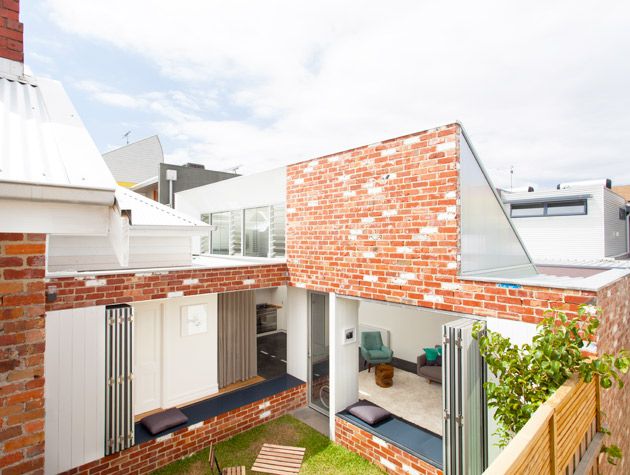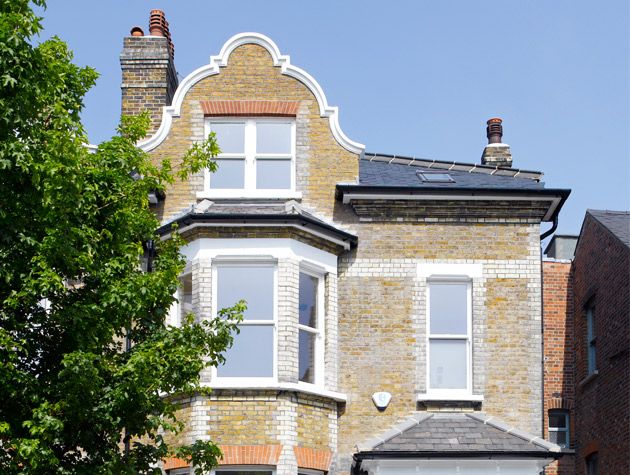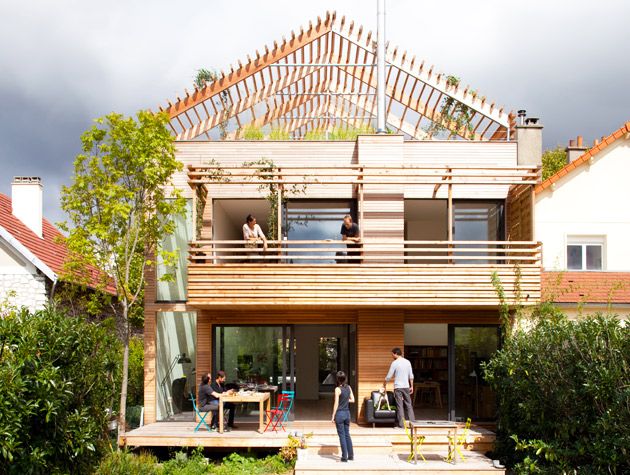Grand Designs Carbon Neutral House
Eco homes come in many guises, from super-modern new builds to retrofitted Victorian terraces. Grand Designs examines 10 projects that push the boundaries of sustainable architecture…
1. Less is more
This home for a family of six near Stuttgart, Germany, treads lightly on the planet by packing a lot of function and flexibility into its 138sqm footprint. The timber eco home is very airtight and has a ground-to-air heat exchange to moderate the temperature of incoming fresh air.
The house can even be split into two separate apartments once the children leave. The ground floor has the kitchen, dining and living areas, plus a study and balcony, so the family can be together or apart, inside or outside, in one compact space. The first floor has the bedrooms, while the top floor and attic have additional living areas, sleeping zones and bathrooms, and can be accessed by an external staircase, making it ripe for sub-division later.
'Every square metre of space that you don't build counts as sustainable, so an intelligent floorplan was our main goal, in order to make this house sufficient and adaptable,' says architect Jan Theissen from Architekten Martenson und Nagel Theissen.

Photo: Brigida González
2. Down to earth
Built on a plot formerly occupied by an oil pipe, this low-energy house is about healing the land, according to practice Bercy Chen Studio.
The eco home was created for a science-fiction writer in Houston, Texas, and inspired by Native American pit houses, which are partially dug into the ground to keep them cool in summer and warm in winter. This one is built 2.1m below ground, with a green roof for extra insulation; more than 40 species of plants and wildflowers surround it to foster the local eco system.
The 148sqm property has direct access to its setting with a central terrace that the owners have to cross to get from one side of the house to the other. An underground tank allows them to store and re-use rainwater, and a groundsource heat pump provides additional heating.

Photo: Paul Bardagjy
3. Salute to the sun
This house in Melbourne, Australia, has turned its back on the bad to embrace the good. Its south-facing rear (equivalent of north-facing in the northern hemisphere) was casting shadows across the garden, and surrounded by ugly buildings on all sides, so Melbourne practice Architecture Architecture designed a clever extension across the back.
It has allowed the owners to relocate their living-dining-kitchen space to face north, so they get good natural light all day, and also includes a private courtyard garden that blocks out the unsightly neighbouring properties. A tall roof allows room for clerestory windows, which bring in more light and ventilation. Dark concrete floors also soak up warmth from the sun and release it later. The extension has added approximately 30sqm of space.

Photo: Tom Ross of brilliantcreek.com
4. Retrofit for the future
Bere Architects took a 'build tight, ventilate right' approach when retrofitting this 232sqm London home for a family of five, reducing the energy required for heating by a whopping 88%. Gas bills are now a maximum £130 a month in winter, and electricity bills are £100 a month, which includes charging an electric car [prices correct at time of publication in 2014].
The upgrade includes new double-glazed sash windows at the front, new triple-glazed windows at the back, and a super-sealed front door by Double Good Windows, plus a high-performance Novus 300 heat recovery ventilation system to keep fresh air flowing inside when the windows are closed. For insulation, Bere used wood fibre for internal walls at the front, and 10cm Permarock phenolic insulationfor the side and back. Amazingly, this created the biggest challenge as they had to win a landmark planning appeal to get permission to add it.

Photo: Jefferson Smith
5. Green roof with a view
When French architect Djuric Tardio built this eoo home on the outskirts of Paris, he wanted it to remain sympathetic to the pitched roofs of the local area, but without the large wasted attic space.
The solution: leave the pitched structure open and use it as a pergola for the family to grow their own fruit and vegetables, with a roof terrace beneath. This stunning eco house was prefabricated with sustainable larch panels and assembled on site in two weeks, minimising construction waste and disruption. The 246sqm house also has a rainwater harvester for the plants, and super-efficient external insulation, so that the underfloor heating is hardly needed.

Photo: Clément Guillaume
Grand Designs Carbon Neutral House
Source: https://www.granddesignsmagazine.com/self-build/eco-homes-showcasing-sustainable-architecture/




Post a Comment for "Grand Designs Carbon Neutral House"